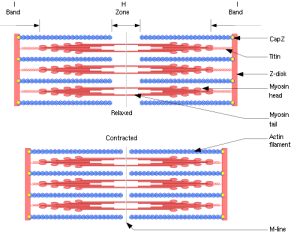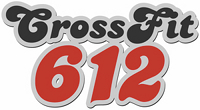Part 1 of this series talked about the Hill Muscle Model. The Hill model has been around since the 1930′s. In those days, people didn’t know much about muscles at a molecular level. So researchers used system engineering concepts to mathematically predict muscle behavior. The Hill model is fundamentally a mechanical model.
By the 1970′s people knew a lot more about the internal composition of muscle and people were able to model muscle behavior at a molecular level. Probably the dominant molecular model is the sliding-filament theory proposed by Andrew Huxley.
If you’re interested in geeking out you can check out this video or this slide show. For you non-pointy-heads, here’s a very simple way to think about muscles at a molecular level. Your muscles are made up of myosin and actin. Myosin acts like a ratchet that binds to an actin filament. When you flex your guns in front of the mirror, a jillion little ratchets are paddling their way up actin filaments.
The molecular model is vexing. How are you supposed to make your ratchets work better? You can’t even see them.
This is what makes mechanical models of muscle behavior so attractive. If you think about muscles in terms of movement then you can reduce any element in CrossFit to a simple engineering problem.
But moving well is different than living well.
It doesn’t matter how well you are moving if you don’t sleep enough and then sit in a cubicle eating toaster pastries and beef sticks all day. If this is you then, you are messed up at the molecular level. Your ratchets aren’t working and no amount of grunting and heaving will help you.
So the mechanical model is really relevant to what you do while you’re in the gym. The molecular model is really about how you live your life outside of the gym.







